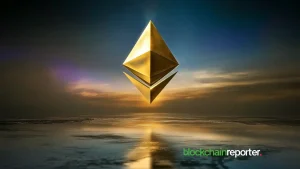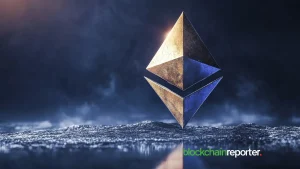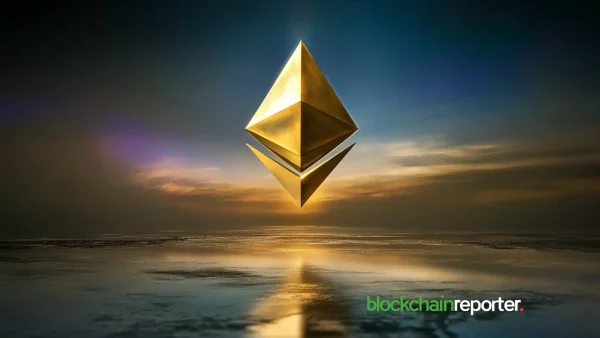
- 1. 7 Best Cheap Crypto To Buy Now For Capitalizing on Web3
- 2. Arbitrum (ARB)
- 3. Conclusion On The Best Cheap Crypto to Buy Now
Tapzi is an upcoming Web3 gaming platform that aims to become a global hub for skill-based player-versus-player gaming. Unlike many GameFi projects that rely on speculation or inflationary play-to-earn systems, Tapzi is structured to prioritize competitive fairness, transparent mechanics, and long-term scalability.
Its model focuses on player skill rather than chance, with initial titles including chess, checkers, rock-paper-scissors, and tic-tac-toe, all integrated with staking and prize pool systems.
The platform’s phased roadmap begins with a foundation phase in late 2025, including a public website launch, whitepaper release, smart contract audits, and a playable web demo, followed by a beta launch, token listing, and the first global tournament.
By early 2026, Tapzi plans to introduce NFT-based cosmetic customization, multilingual support, and guild integrations, with further expansion to a developer SDK, large-scale tournaments, and cross-chain deployments.
Its native TAPZI token will serve multiple functions, including staking for match participation, funding prize pools, purchasing cosmetic NFTs, and potentially enabling governance rights. The SDK initiative also suggests a role for TAPZI in incentivizing third-party game development on the platform.
Given the broader trend toward institutional interest in blockchain infrastructure and the growing demand for real-time digital asset use cases, Tapzi’s approach aligns with market shifts favoring platforms with practical utility and user retention strategies.
If adoption proceeds organically through gameplay rather than speculation, the project could capture both casual and competitive gaming audiences, positioning it within a niche sector of blockchain gaming that analysts expect to expand in the next market cycle.
Here’s where we have covered the 7 best cheap crypto to buy now in this article.
7 Best Cheap Crypto To Buy Now For Capitalizing on Web3
The following is a list of the best cheap crypto to buy now that are no less than lottery tickets for Web3:
- Tapzi (TAPZI)
- Dogecoin (DOGE)
- Tron (TRX)
- Cardano (ADA)
- Stellar (XLM)
- Arbitrum (ARB)
- Polygon (POL)
While Web3 is rapidly expanding with veteran coins and newer ones being added every day, various reasons make them the best cheap crypto to buy now, and let’s check the details!
Tapzi (TAPZI)
Tapzi is an upcoming Web3 gaming platform that aims to create a global hub for competitive player-versus-player gaming. It is designed to shift blockchain gaming away from speculative play-to-earn systems and toward skill-based competition supported by transparent infrastructure.
The project’s development plan spans multiple phases beginning in Q3 2025, including a public website launch, smart contract audits, and the release of a web-based demo featuring classic games such as chess, checkers, rock-paper-scissors, and tic-tac-toe.
Click Here – The $TAPZI Presale Won’t Last Forever!
Early adoption will be supported through presales with structured vesting to limit inflation and secure initial liquidity.
By Q4 2025, Tapzi intends to roll out its beta platform on mainnet, list the TAPZI token on PancakeSwap, and host its first global tournament. A mobile application in alpha will make participation more accessible to casual users.
The roadmap for 2026 includes NFT-based customization, integration with gaming guilds, multilingual support, and a developer SDK to enable third-party game creation.
Scalability upgrades are projected to accommodate over 100,000 daily active users, with cross-chain expansion to Ethereum and Polygon to broaden market access.
The TAPZI token will serve as the central utility for staking, prize pools, NFT purchases, and potentially governance. Holding the token could grant access to higher-tier tournaments and exclusive features.
For those exploring lower-cost crypto assets with functional use cases, Tapzi presents a concept rooted in skill-driven gameplay and platform sustainability.
Investing organically in such projects relies on understanding their roadmap execution and adoption potential rather than short-term speculation.
Dogecoin (DOGE)
Dogecoin launched in 2013 as a playful take on cryptocurrency, inspired by the viral Shiba Inu meme. What began as a joke quickly grew into one of the most recognized digital assets, thanks to its active community and lighthearted branding.
Technically, Dogecoin operates on a proof-of-work mechanism similar to Bitcoin but offers faster block times and lower transaction costs, making it practical for tipping, donations, and microtransactions. It has been embraced by online communities and used in charity initiatives, further boosting its cultural relevance.
While DOGE lacks the complex smart contract capabilities of more advanced blockchains, its staying power lies in community-driven momentum and global recognition.
Priced under $1, it remains accessible to everyday investors seeking speculative opportunities in familiar, well-followed assets.
In the unpredictable Web3 landscape, Dogecoin stands as a reminder that strong community engagement and brand recognition can sometimes rival technical complexity in driving adoption and market value.
Tron (TRX)
Tron, founded by Justin Sun in 2017, aims to create a decentralized internet infrastructure by enabling seamless peer-to-peer content sharing, application deployment, and tokenized ecosystems.
Operating on a Delegated Proof-of-Stake (DPoS) consensus mechanism, Tron delivers thousands of transactions per second at negligible costs, making it highly competitive in scalability and efficiency. Its acquisition of BitTorrent brought decentralized file-sharing directly into its network, expanding its utility and reach.
Tron has also emerged as a dominant platform for stablecoin issuance, particularly USDT, due to its low fees and high throughput. The TRX token is used for transaction fees, staking, and governance participation, ensuring active community involvement in shaping the platform’s future.
With its under-$1 price tag and established infrastructure, Tron remains appealing to whales and retail investors alike. Its broad ecosystem spanning entertainment, DeFi, and cross-border payments positions it as a resilient, low-cost asset that could benefit significantly from the next wave of blockchain adoption.
Cardano (ADA)
Cardano is a third-generation blockchain platform developed using a research-first methodology, aiming for scalability, security, and sustainability.
Founded by Charles Hoskinson, one of Ethereum’s co-founders, Cardano runs on the Ouroboros proof-of-stake protocol, delivering energy efficiency without compromising decentralization.
ADA, its native token, powers transactions, staking rewards, and governance, giving holders direct influence over protocol upgrades. The network’s layered architecture separates settlement and computation, allowing for smooth, non-disruptive upgrades.
Cardano has been actively exploring real-world use cases, from supply chain transparency to digital identity solutions in developing nations.
Despite its methodical development pace, it continues to draw institutional and retail interest, especially during market consolidations when whales tend to accumulate.
Trading well below $1, ADA offers an affordable entry into a robust ecosystem with long-term ambitions.
For investors seeking a blend of academic rigor, utility-focused development, and potential upside in the next bull run, Cardano remains a notable contender.
Stellar (XLM)
Stellar is a blockchain network built for fast, low-cost cross-border payments. Founded in 2014 by Jed McCaleb, it aims to connect banks, payment providers, and individuals to make global transactions more efficient and inclusive.
The Stellar Consensus Protocol (SCP) enables near-instant settlement with minimal energy consumption, distinguishing it from proof-of-work models. XLM, Stellar’s native token, facilitates transactions and helps maintain network efficiency.
The platform supports multiple fiat and crypto assets, making it highly adaptable for remittances, microtransactions, and tokenized asset transfers. Strategic partnerships, such as with MoneyGram and Circle, have strengthened its role as a bridge between traditional finance and blockchain technology.
With a price under $1, Stellar remains an accessible option for investors who value utility-driven adoption.
Its focus on financial inclusivity and interoperability aligns with long-term trends in digital payments, making XLM a project with both practical relevance and the potential to benefit from increasing blockchain integration in global finance.
Arbitrum (ARB)
Arbitrum is a leading Layer 2 scaling solution for Ethereum, designed to enhance transaction speed and reduce gas fees while maintaining Ethereum’s security.
It uses Optimistic Rollup technology, bundling multiple transactions into batches processed off-chain before being settled on Ethereum.
This approach dramatically improves scalability, making Arbitrum a favored network for DeFi protocols, NFT marketplaces, and Web3 applications seeking efficiency without sacrificing decentralization.
The ARB token enables governance participation, allowing holders to vote on protocol upgrades and ecosystem initiatives.
Since its mainnet launch, Arbitrum has attracted significant developer activity, hosting some of the largest decentralized applications in the Ethereum ecosystem. As Ethereum adoption grows, demand for Layer 2 solutions is expected to rise, positioning Arbitrum for continued relevance.
With its current market price under $1, ARB offers investors affordable exposure to the scaling infrastructure critical to blockchain’s next growth phase. Its blend of technical utility and developer momentum strengthens its long-term investment case.
Polygon (POL)
Polygon is a multi-chain scaling framework for Ethereum, designed to enhance transaction throughput while reducing costs.
Formerly known as Matic Network, Polygon offers multiple scaling solutions, including sidechains, zk-rollups, and optimistic rollups, making it versatile for a wide range of applications.
The POL token (successor to MATIC) is used for transaction fees, staking, and governance, ensuring active network participation. Polygon has become a go-to platform for DeFi projects, NFT marketplaces, and enterprise blockchain integrations due to its speed, low fees, and compatibility with Ethereum tools.
Major brands like Starbucks, Nike, and Reddit have launched Web3 initiatives on Polygon, underscoring its mainstream appeal. With its sub-$1 valuation, Polygon provides an affordable entry into a high-utility network that is already delivering large-scale adoption.
As Ethereum’s ecosystem expands, Polygon’s role as a scaling layer is expected to remain vital, making it a strong candidate for investors seeking exposure to core blockchain infrastructure at an accessible price point.
Conclusion On The Best Cheap Crypto to Buy Now
In evaluating the best cheap crypto to buy now, each project presents a unique blend of utility, accessibility, and long-term potential within Web3’s evolving ecosystem.
While established names like DOGE, ADA, and XLM maintain strong market recognition, emerging platforms offer distinct growth angles.
Tapzi, for example, reflects a broader shift toward blockchain applications grounded in user engagement rather than speculative cycles, with its skill-based gaming model and phased roadmap aligning with sustainable adoption trends.
As market conditions mature, assets combining real-world usability with scalable infrastructure could stand out, making strategic selection essential for navigating the next phase of crypto growth.








